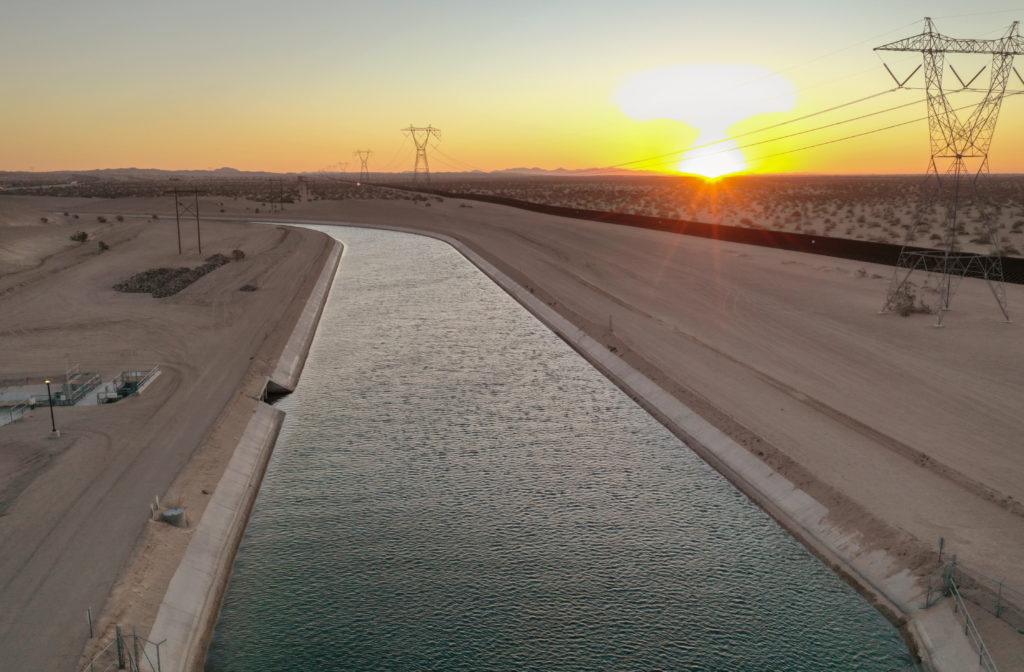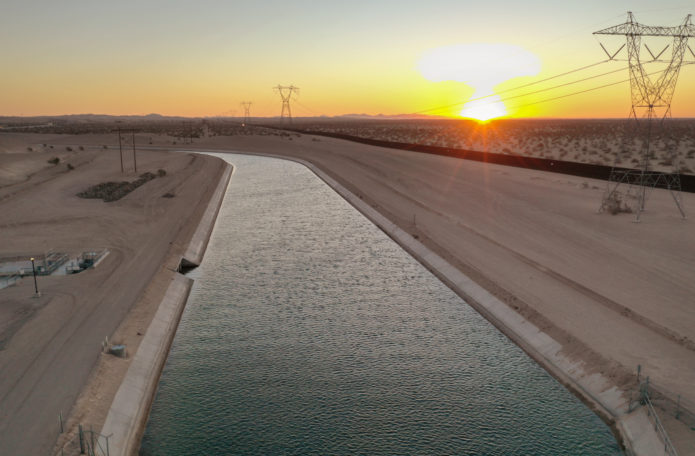
This new year is a critical one in several ways, bringing with it challenges but also opportunities to determine a path forward when it comes to protecting water supplies for both the needs of today and generations to come. As 2021 rolls forward, it is worth looking at some of the key milestones this year. As we think about this year and by extension the years to come, it is also important to consider the efforts of current and past generations who have found a way to work through controversy, come together and take steps meant to preserve this essential natural resource so that today we have a foundation to build upon.
One important milestone this year is that the conserved water transfer agreement between the Imperial Irrigation District (IID) and the San Diego County Water Authority (Water Authority), the largest ag-to-urban transfer in the nation and the cornerstone of the Quantification Settlement Agreement (QSA), has reached its full transfer mark. As of 2021, IID is transferring 200,000 acre-feet of water conserved both from on-farm conservation and system conservation, and that transfer amount continues until 2047 but can be extended—if both IID and the Water Authority agree—through 2077. In total, 280,000 acre-feet is being transferred, including 80,000 acre-feet of water conserved through the lining of sections of the All-American and Coachella Canals, which was funded by the Water Authority and through bond funding from the state. Since the QSA was signed, the Water Authority has appreciated its partnership with IID and the ongoing and open communication to ensure the goals of the QSA, which include helping California live within its 4.4-million-acre-foot annual allotment of Colorado River, are achieved. The Water Authority is also appreciative of the farming community, which has proven its innovative abilities to incorporate conservation technology into their farming practices.
Certainly, you cannot discuss the QSA without also discussing the Salton Sea, and this year marks a pivotal time—both in terms of challenges and opportunities to work together. As noted in a recent blog, the state this year is launching work on its Species Conservation Habitat project, a 4,100-acre site that will consist of a series of ponds meant to support fish life, continue to attract migratory birds, and protect human health. Clearly, it is only one step, but that doesn’t detract from its importance. So, this year, in one respect, represents a beginning of what will be an ongoing process led by the state to address restoration. Also pivotal is that the state will be developing a long-term plan for restoration of the sea throughout this year and next (the plan is due in December 2022). That plan may involve a consideration of water importation—not to disrupt the immediate projects but in a way that considers what is possible for the long-term operation and maintenance of the sea. The future of the sea depends on stakeholders finding ways to work together toward projects and solutions. It is apparent that all engaged stakeholders care deeply about the sea and while there may be differences on how to address the challenges, what matters is that the dialogues continue at the same time as on-the-ground projects move forward.
The Salton Sea is also tied to the new round of discussions getting started this year into the future operations of the Colorado River. Since 2007, the Colorado River has been managed under a set of interim guidelines designed to address the delivery of river supplies to contractors, including in years of shortage. The 2007 Interim Guidelines have provided a period of clarity on the river’s management. However, ongoing drought, which brought the river perilously close to shortage—based on reservoir levels at Lake Mead—necessitated the drafting of additional criteria in 2019 known as the Drought Contingency Plan (DCP) to further determine how cuts on the river would be implemented and shared. While California is largely protected under the 2007 Interim Guidelines and DCP, the time has come to negotiate the next set of long-term guidelines for the river’s future management. Those talks begin now and are meant to culminate with a set of guidelines to be adopted by 2026. These upcoming negotiations are something we all must watch to make sure our regions are protected, and that California’s river supplies are upheld. Further, the Salton Sea must be a part of those talks.
Another important matter this year is the Water Authority’s Regional Conveyance System Study (RCSS), a two-phase feasibility study to consider an alternative way to transport the Water Authority’s QSA supplies from the Imperial Valley directly to San Diego County—a discussion that absolutely would affect generations to come. Currently, the Water Authority pays Metropolitan Water District of Southern California to transport its QSA supplies through an agreement that expires in 2047. Phase A of the RCSS, completed in August 2020, demonstrated two potential routes extending between the Valley and San Diego are technically feasible and also cost competitive with other options. With that in mind, in November 2020, the Water Authority Board of Directors approved to proceed to Phase B of the study, which will take about 18 months to complete and will determine whether alternative conveyance could, in fact, bring long-term maximum benefit to the San Diego region and to other stakeholders in California and specifically the Southwest. This year it will be crucial that we engage in talks with stakeholders to ensure an informative and transparent process and one that takes a close look at potential partnership opportunities that could ensure this proposed project would be mutually beneficial. To that end, an open dialogue is important to fully consider what this could mean for future generations. Just as past generations have studied concepts that have become the foundation upon which today’s water users now rely, this is a concept that merits an open discussion in 2021.
This year will be interesting to say the least. This blog has only touched on some of the critical issues that need to be addressed. Water has always been an important and at times controversial subject. This year will be no different. As we recognize important milestones in 2021, there is great opportunity to carve a positive path forward. Addressing issues this year and in years to come will be challenging and require hard work. But without question, there will be value in that hard work and in continuing the dialogue in 2021. Stay tuned for updates on water issues throughout this year.
